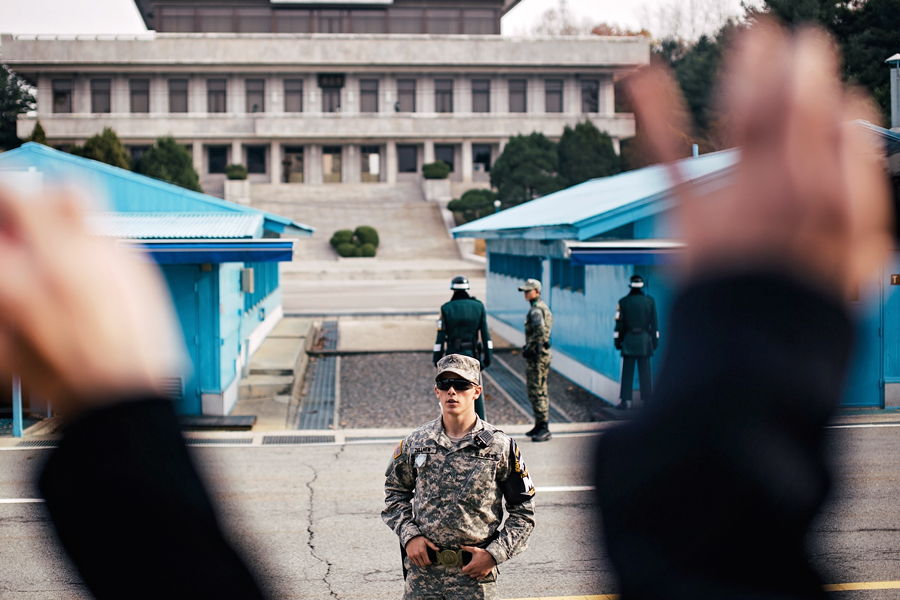
My inner alarm clock woke me 5:35 yesterday morning, which was a good thing seeing as my actual alarm clock had decided to stop working. Why was I waking up at 5:30 on a Saturday? Because this was the day I was going to get to see, step on and take pictures of the border between North and South Korea.
We met at Camp Kim in Seoul at 7:00AM sharp, and boarded a bus for the DMZ or the Korean Demilitarized Zone, the 4 kilometer wide zone that runs from coast to coast and separates the two Koreas. After the Korean War ended in 1953, this area was created to make sure that the concords of the Korean Armistice Agreement were upheld. The DMZ is currently the most heavily militarized zone in the world, according to our guide.
The DMZ is governed by South Korean and American military on the southern side, and by North Korean military and occasionally volunteer Chinese soldiers on the other side.
Our tour took us via Camp Bonifas (named after one of the soldiers who were killed in the 1976 Axe murder incident) and on to what is called the Joint Security Area (JSA). This is where the Korean Armistice Agreement was signed in 1953, and this is also were negotiation has traditionally taken place between the North, and the South or the UN. It also the only place where North and South Korean soldiers are staring each other in the face on a day-to-day basis.
After visiting the JSA we continued on to the last Southern railway station on what is supposed to be a railway connecting the North and South. It is not operating across the border right now, but it did a couple of years back, and it might be restarted in the future.
This was followed by a visit to an observatory, before finishing the tour with a visit to one of the tunnels dug by the North Koreans in one of several attempts to be ready for a possible invasion of the south.
Interesting day filled with historical facts that will take some time to process. Seeing North Korea, the soldiers and the border, after having read the outtakes of the UN report on North Korea, was a sad and surreal experience.
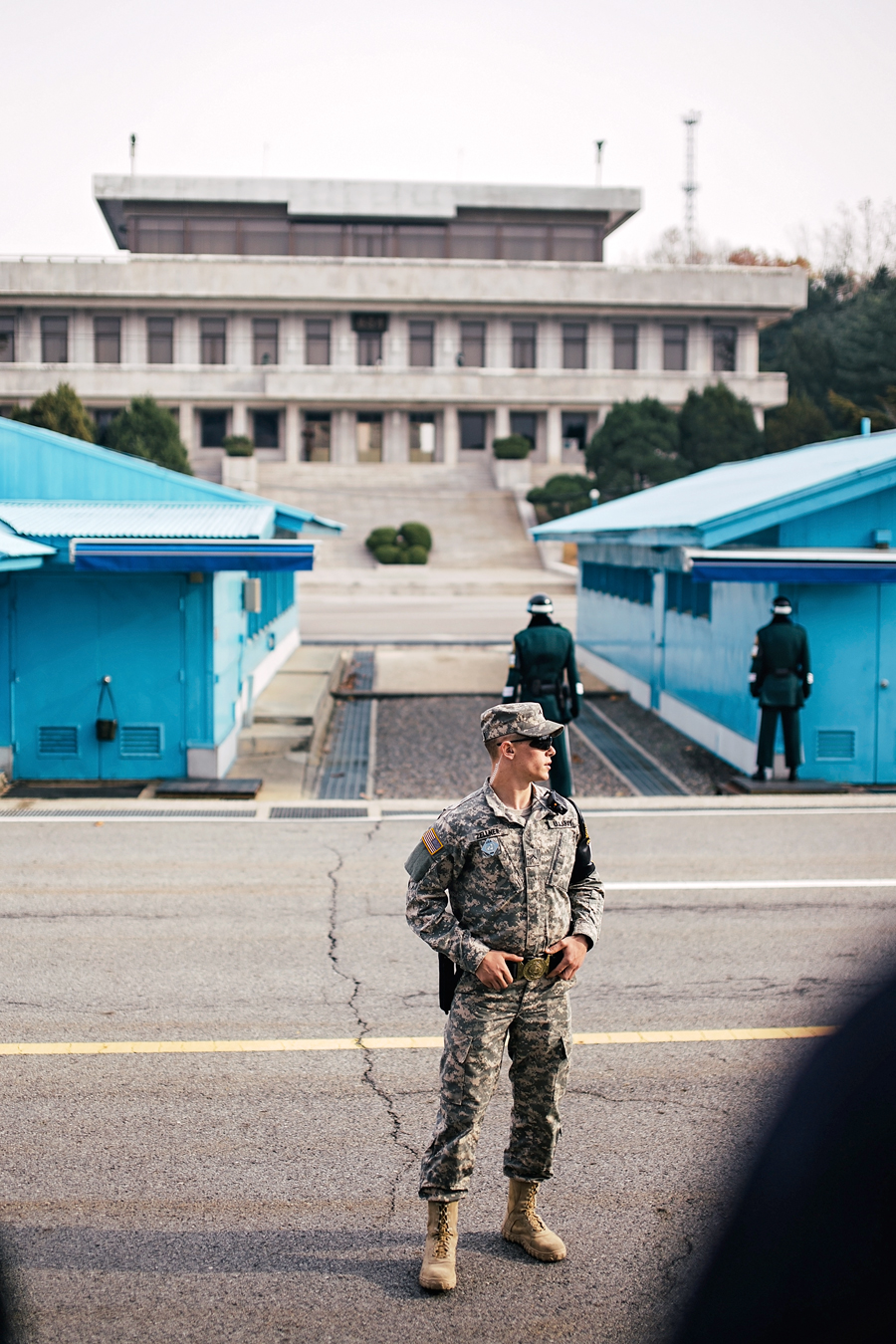
Our guide inside the DMZ, a private of the American forces stationed at Camp Bonifas. That grey building in the background is on North Korean ground. The building used to be lower, but the North Koreans redesigned it so it would be taller than the South Korean one.
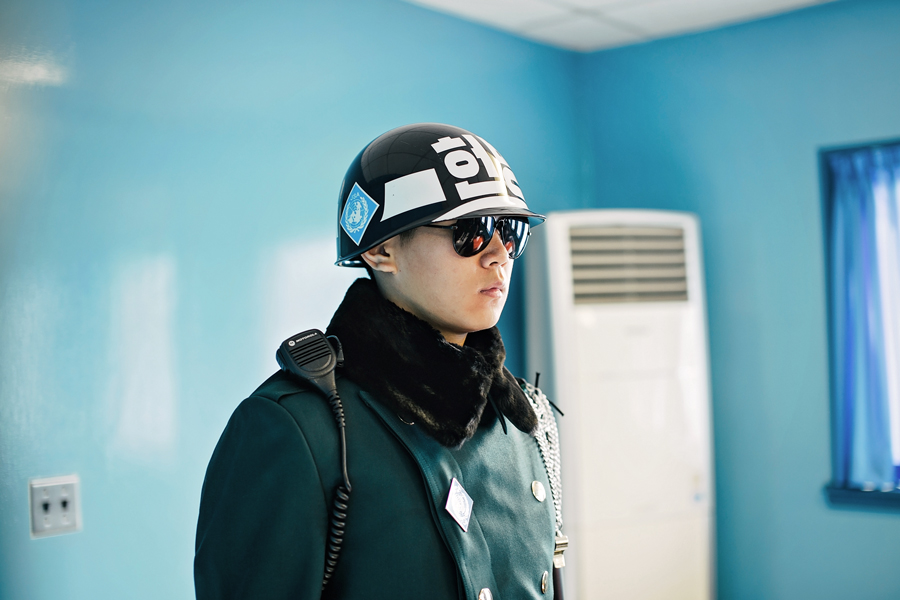
A South Korean soldier stationed at the JSA. The sunglasses are supposed to be intimidating.
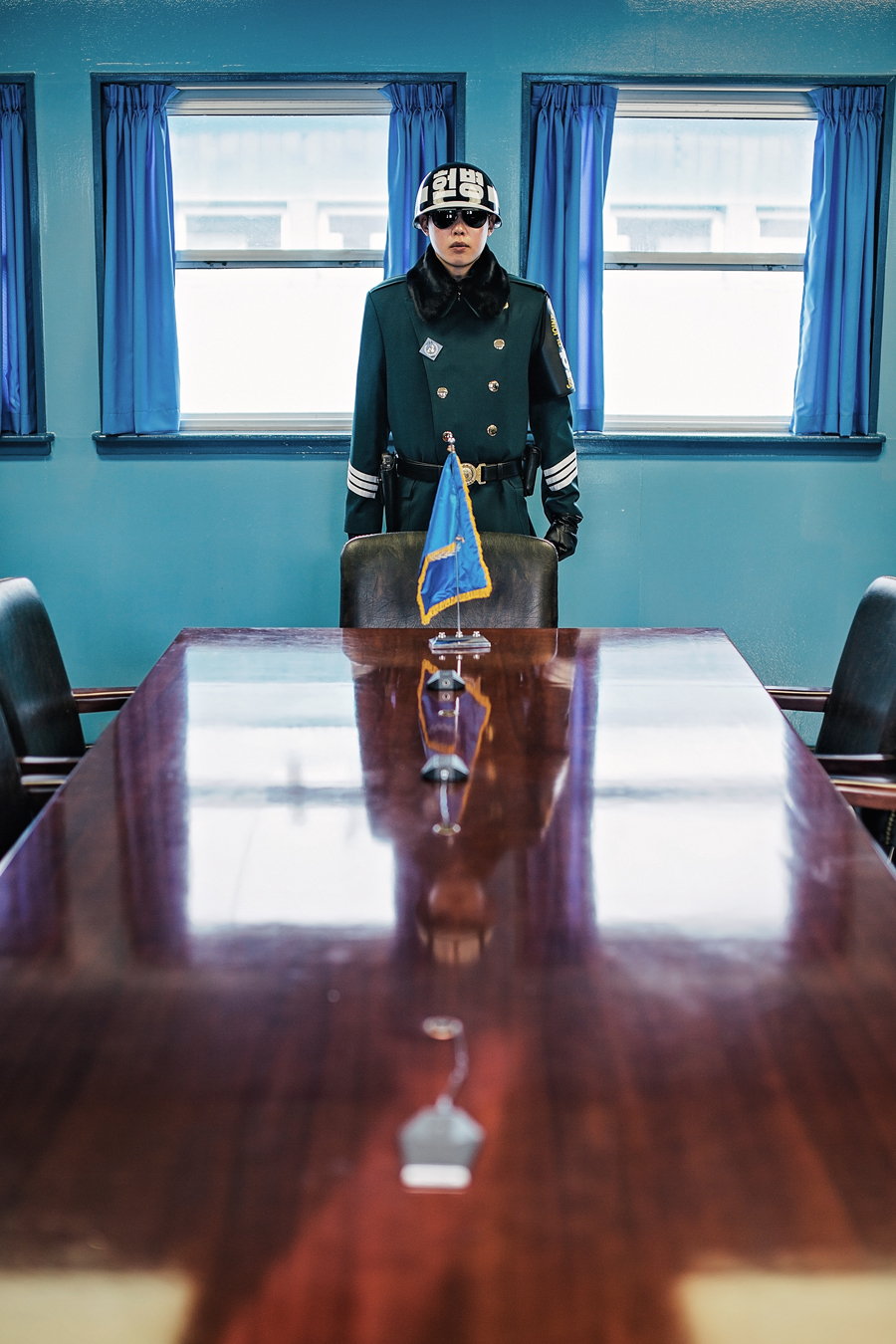
Yet another South Korean soldier stationed at the JSA. These soldiers are trained in taekwondo, and are standing so still you can be easily fooled into thinking they’re not real.
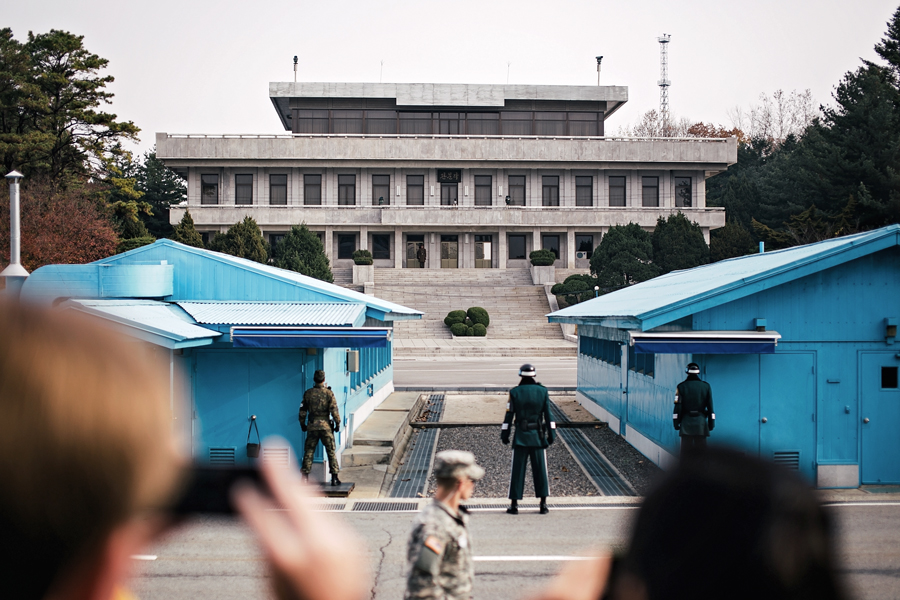
The South Korean soldiers inside the building and outside are standing in a taekwondo pose called ROK Ready. They will hold this position for as long as there are visitors inside the JSA-area. In the background you can see a North Korean soldier standing guard outside the door to the North Korean HQ. The American soldiers call this guy Bob, he’s there often, and unlike the South Koreans he’s usually standing guard alone. Must be a boring life.
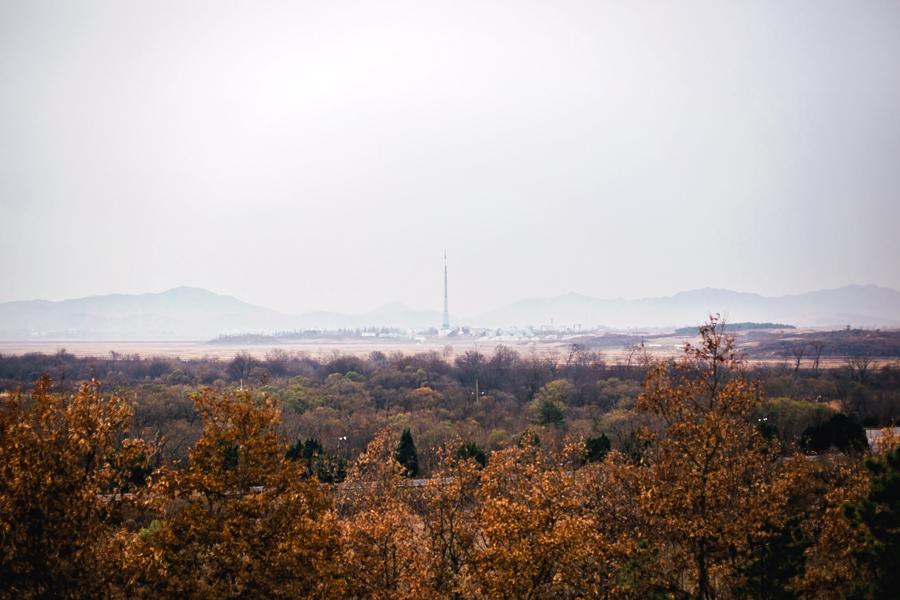
Gijeongdong, or “Propaganda Village”, a village built by the North Koreans on the border of the DMZ to broadcast propaganda messages via loudspeakers to the residents on the South side of the border. The village is not inhabited, and most of the doors and windows are painted on the structures.
The flag pole is another case of the “who can build the tallest structure”-competition North Korea is running. After South Korea set up a 100 meter flag pole in the village of Daeseong-dong, North Korea responded by building a 160 meter tall flag pole. The flag itself weighs 260 kg.
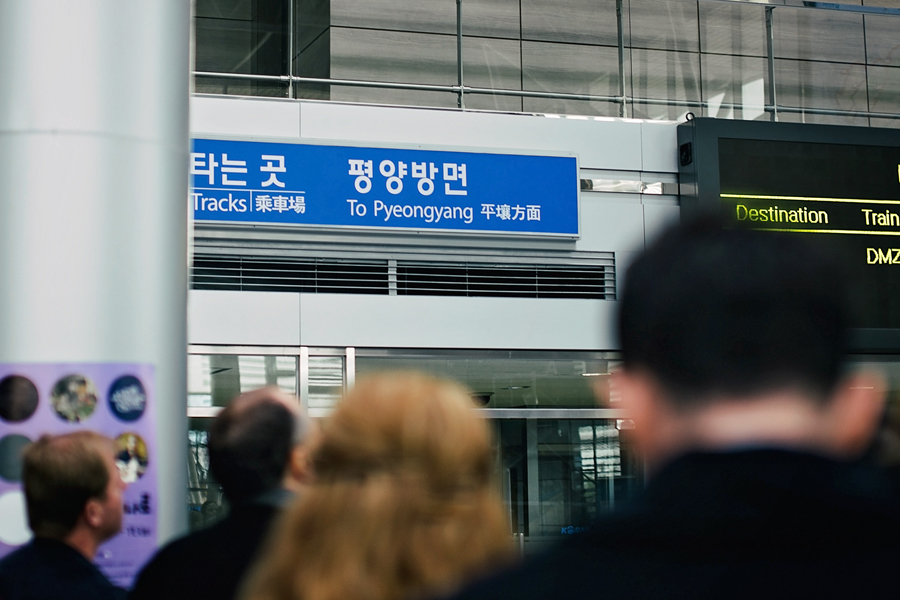
Inside Dorasan station, the train station that would be the last stop in the South on your way to North Korea. At least the signs are ready for the day when you can take a train from here to Pyeongyang (the capital of North Korea).
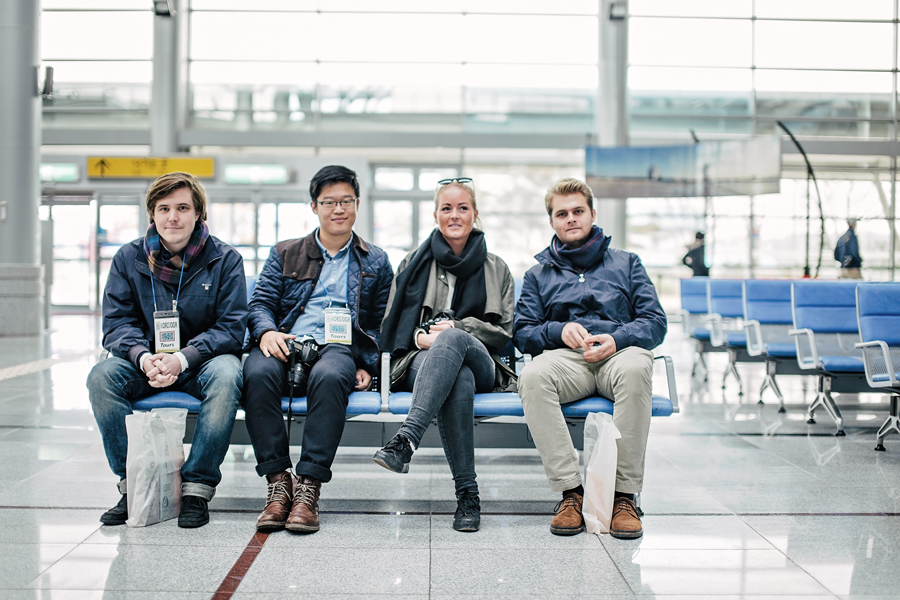
Four of my travel companions waiting for the train to arrive. If you want to travel to Pyeongyang these days, you’ll have to travel via China.
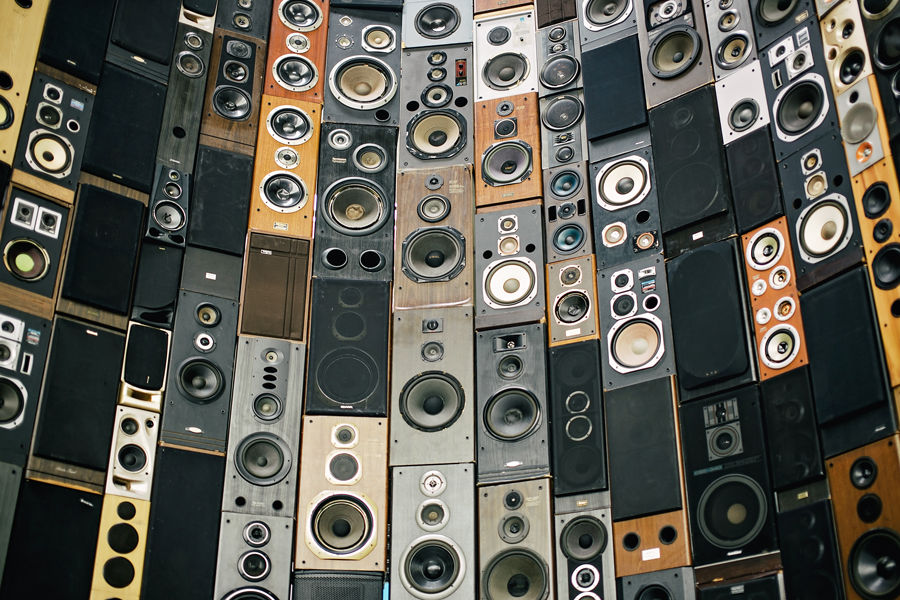
An art-installation at Dorasan station.
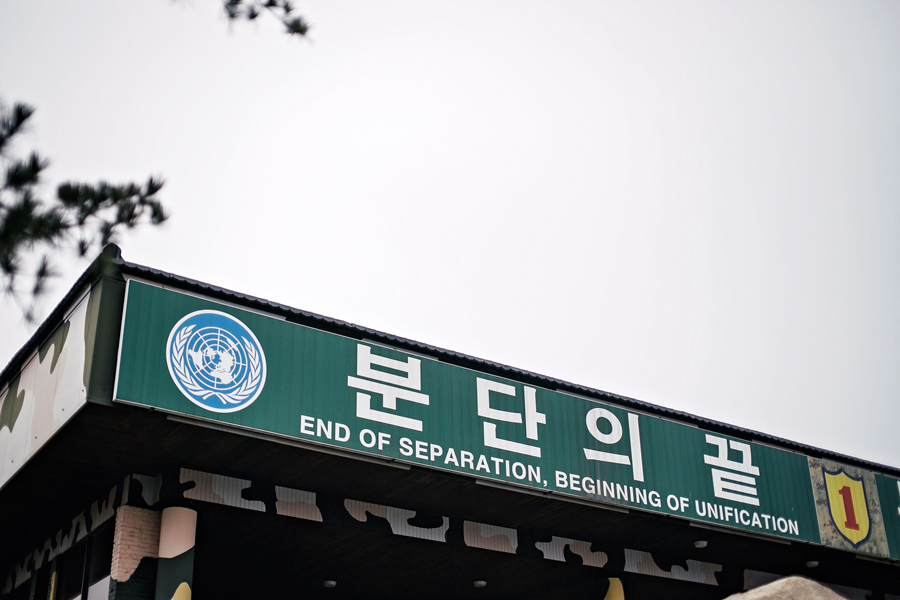
Next stop on the trip: the Dora Observatory.
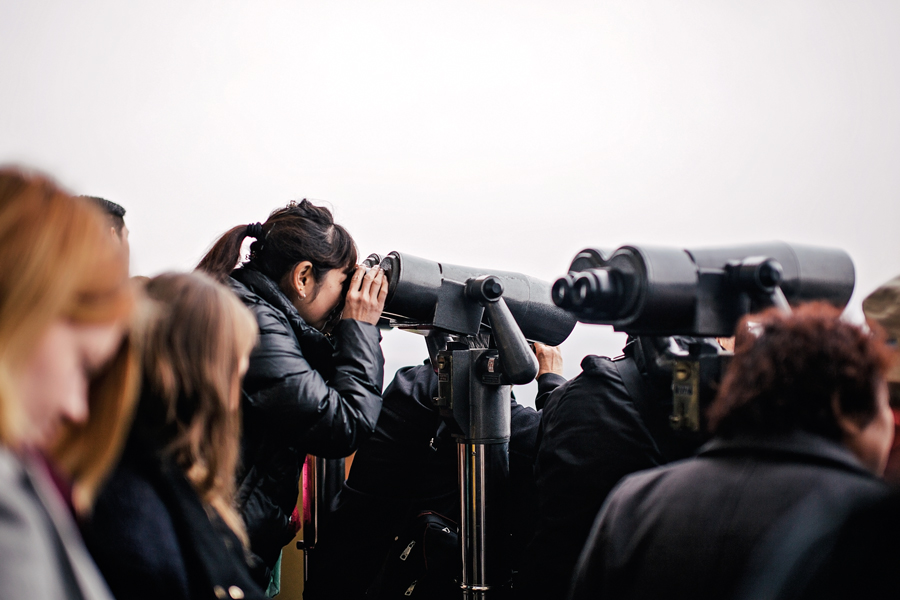
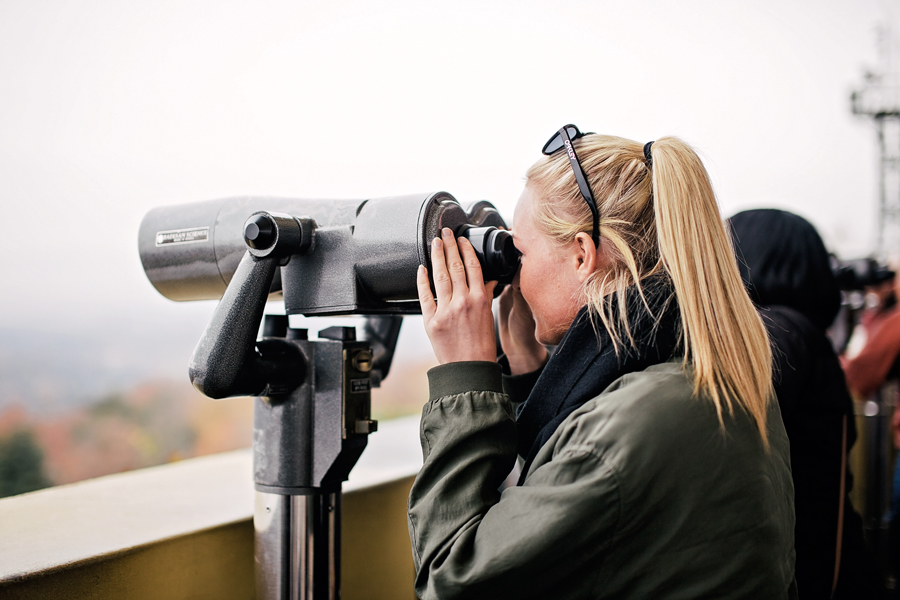
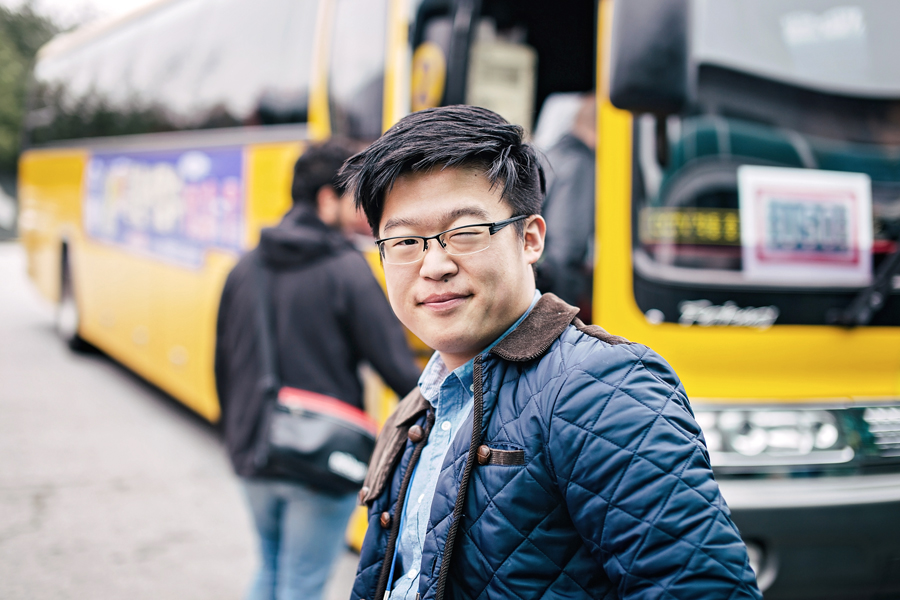
Back on the bus to get to the last stop on the trip: The third infiltration tunnel. Joon was excited.
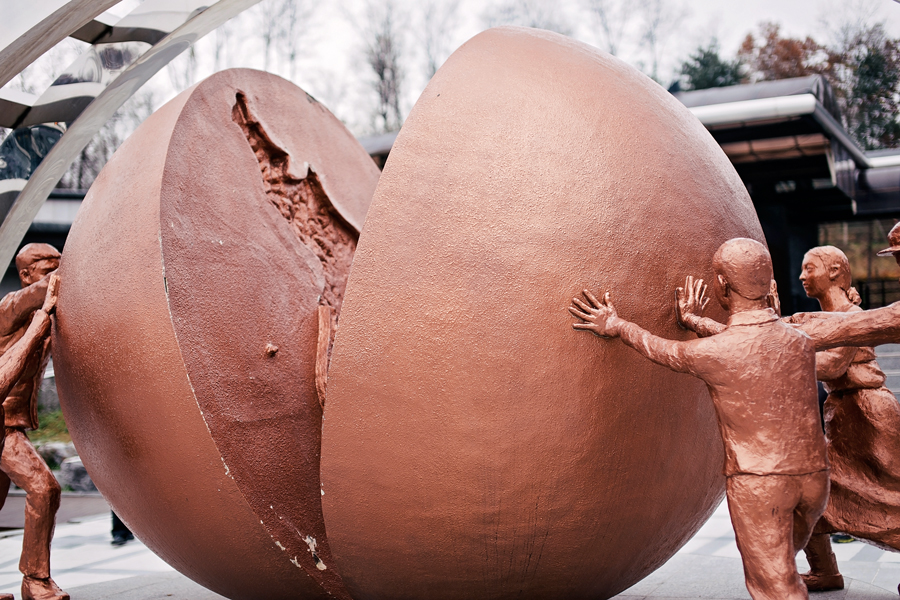
They had a “no photos allowed”-policy for the third tunnel, so if you want to see photos of what it looks like, google “Third Infiltration Tunnel” and you’ll find some nice ones. This is the third tunnel out of four that South Korea has discovered so far. They suspect that there exists at least 17, if not more. North Korea refuse to acknowledge that they are a part of a plot to invade the South, and insist that these are coal mines (even though there’s no coal in the area).
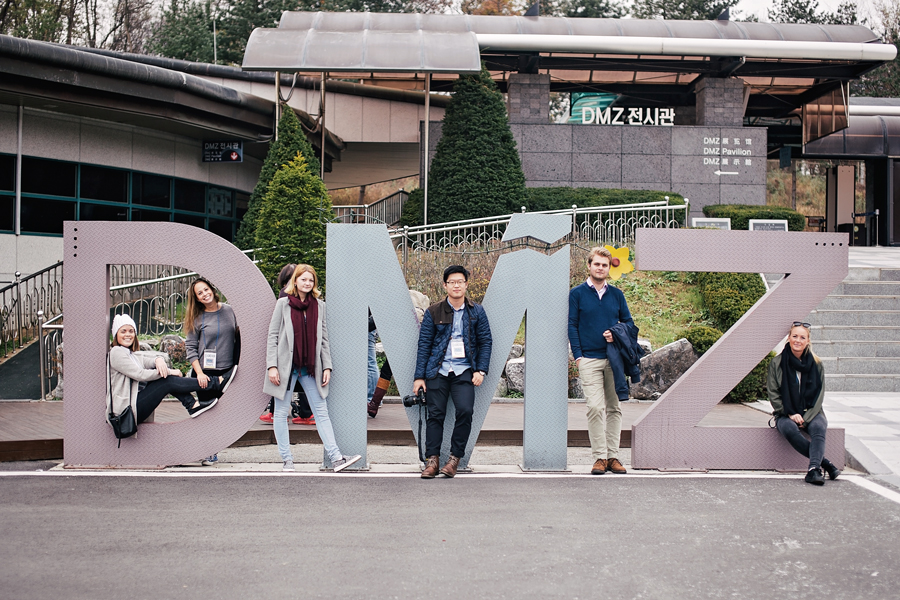
Some of my travel companions and I, posing with the DMZ-sign, with the third tunnel beneath our feet.
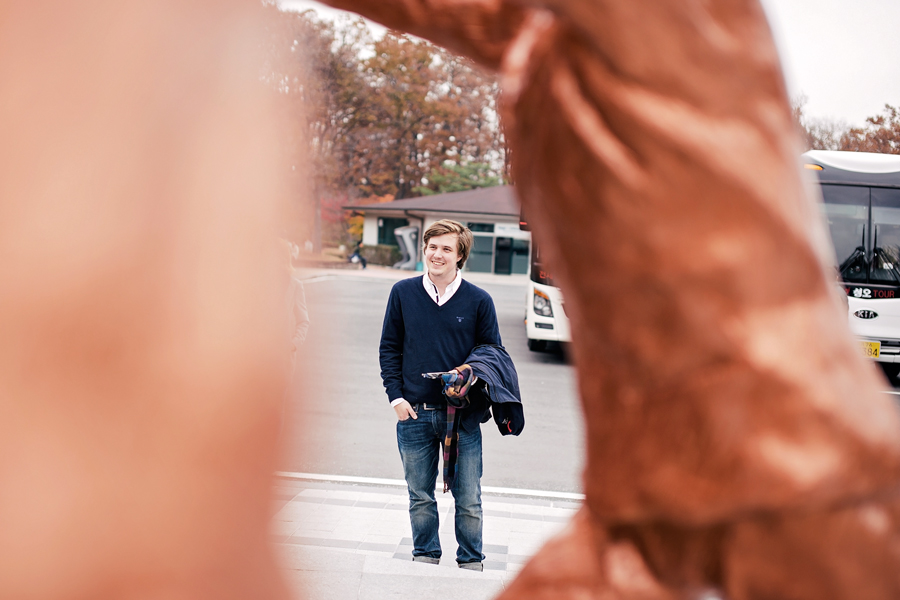
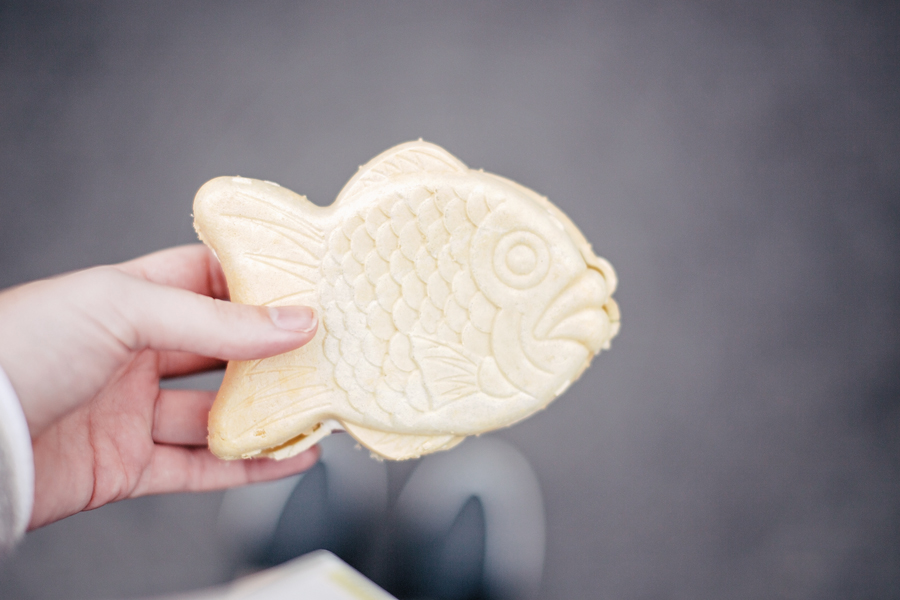
After a long day of walking, listening and processing information, I rewarded myself with some ice cream before we returned to Seoul. We arrived at Camp Kim around 4PM, and returned home happy to live in the South and not the North.
If you’re planning on visiting the DMZ, we traveled with the USO and Koridoor Travels. You can find more information about them here.

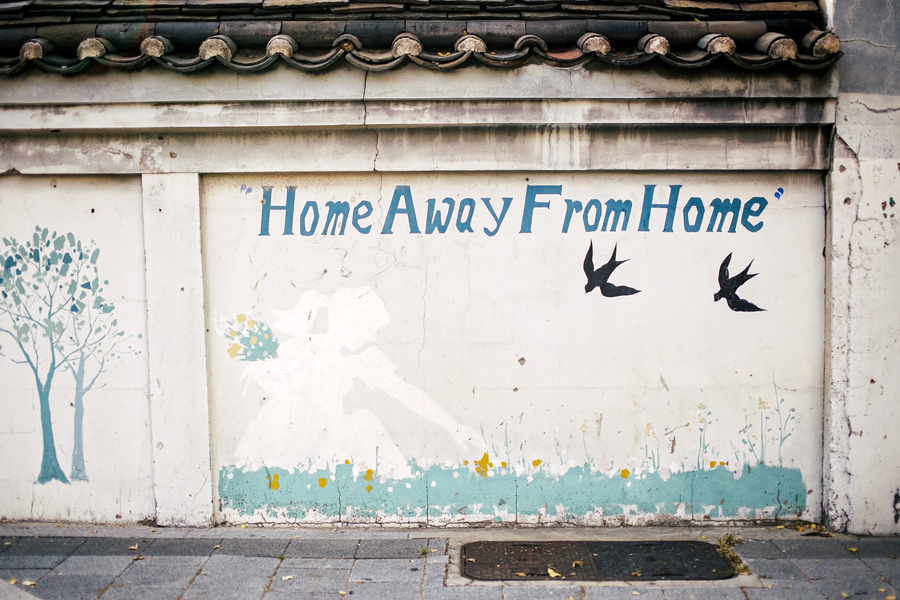
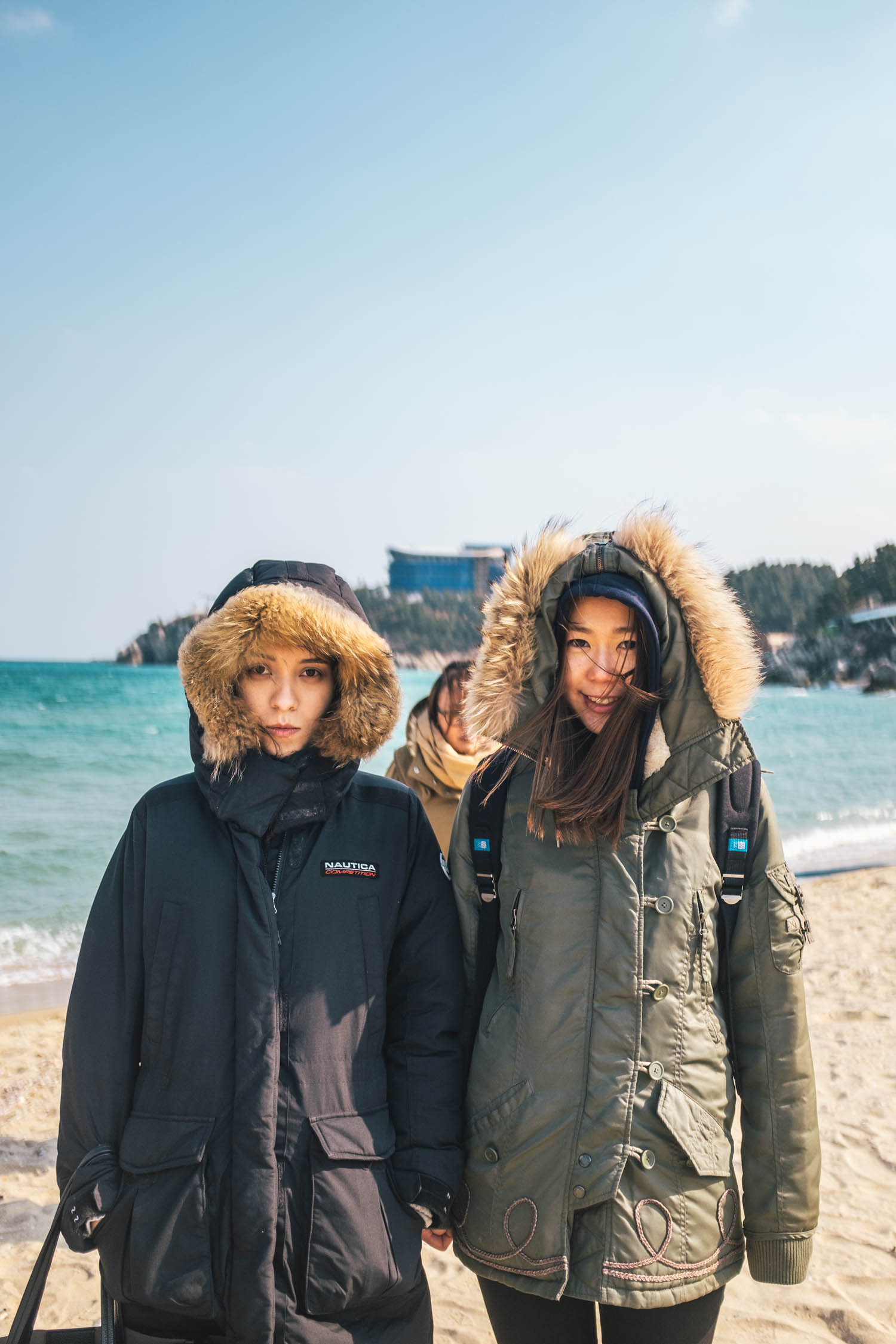


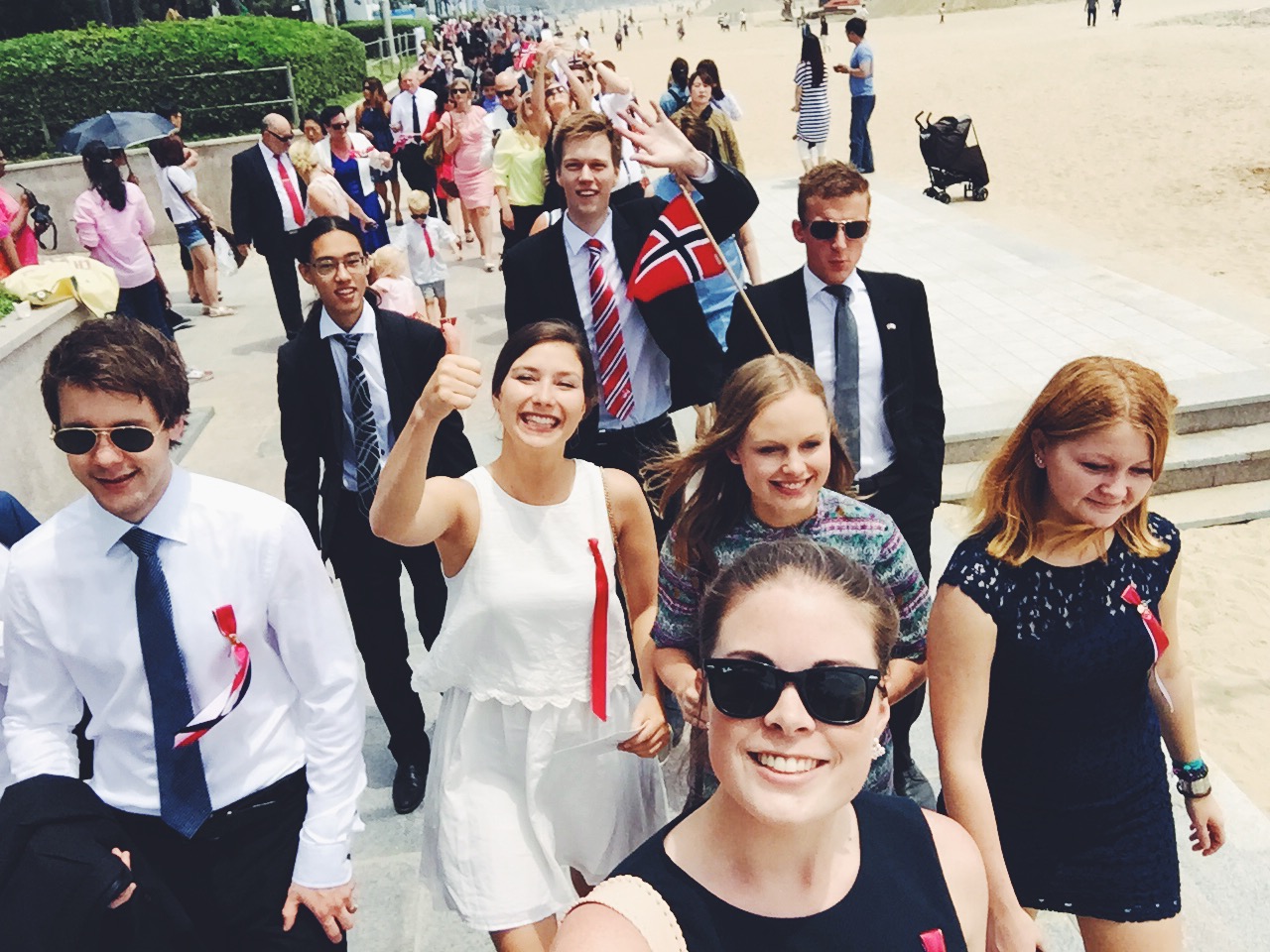
Wow! I am so happy you posted this right now, I am going to take it as an omen that I should travel there. I have been obsessed with NK lately, seen 10+ documentaries, read a ton of articles and checked out several different tour opportunities. And all of a sudden my blog feed also have content related to the country as well? It must be a sign! Were they very restrictive regarding what you could take pictures of during your visit? Could you ask your guides questions freely?
I am planning a trip to Pyeongyang (hopefully next year), and I’ve had the same feeling. Suddenly everyone was posting photos, videos and articles about North Korea, and two of my friends just came back from separate trips to Pyeongyang. I choose to see it as a sign too.
Regarding the trip I was on, it was only a trip to the border between the South and the North, so we didn’t actually interact with any North Koreans. The american soldiers escorting us were very restrictive on photos when we visited the JSA, but other than that we were free to take pictures as we wished. All questions were welcomed and answered, then again these were Americans, not North Koreans. You can’t access the North from South Korea unless you plan on staying there indefinitely.
This is amazing, the photos are amazing and having you narrate it makes me sort of feel as if I’ve been there now.
xx Cheyenne
Don’t take my words for it though, you should put it on your “to do”-list!
Så spennende det må ha vært å være der, og SÅ fine bilder!
Tusen takk, June!
Åh, så utrolig spennende! Det må ha vært en fantastisk opplevelse!
Det var utvilsomt en “once in a lifetime”-opplevelse. Vi får se hvor lenge grensen blir værende slik den står idag.
Hi Maren! I was wondering if you are planning on posting some sort of article with tips about traveling in South Korea (or maybe you’ve already written about it?). I’m interested in visiting South Korea but I notice there’s not that much to find about it compared to other Asian countries. I also heard some people say South Korea is really expensive, while others say it’s not that bad. I enjoy reading your blogposts a lot!
Hi Angela! I’ve already written one guide to Seoul, which you can find here: https://the-wanderlust.com/2015/05/city-guide-seoul/. I think Seoul’s price level is similar to most other big cities, and cheaper than some. Food at restaurants is generally cheap, coffee = not so much. I definitely recommend visiting, especially in the spring or early fall (summers are very hot, and winters are very cold).